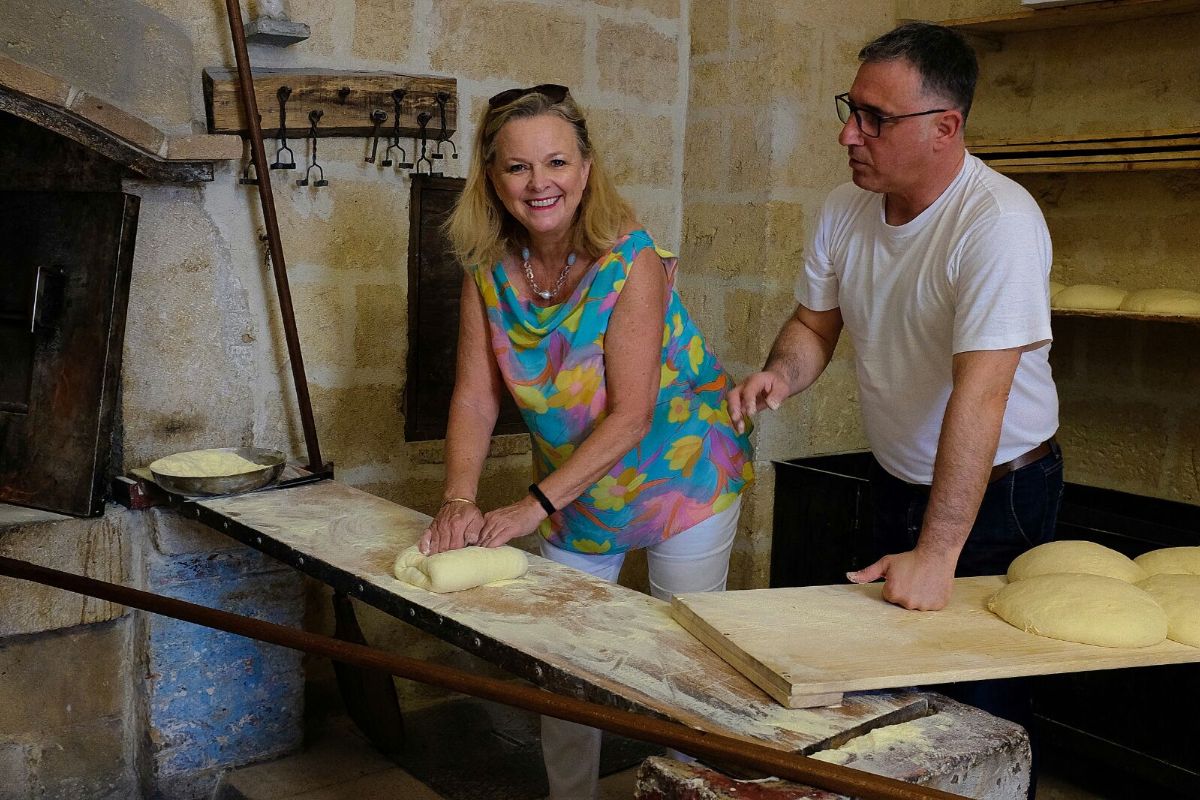
Italian food is one of the world’s great cuisines. It has long been popular in Australia, with migrants arriving after the first and second world wars. Indeed it is popular all over the world. The food is approachable and suitable for all ages. However, when you visit Italy, you will notice that produce and recipes are regional. You may fall in love with the saltimbocca in Rome or the magnificent huge Bistecca and hearty soups in Florence, but you won’t find them in any other area. Each region is fiercely proud and protective of their produce and recipes, making it one of the most fascinating countries gastronomically. Every region is a joy to visit.
The produce markets in Italy abound with endless seasonal varieties of vegetables, salad leaves, bitter greens – many that are only grown in their local area can’t be found anywhere else. Tomatoes in the warmer months are exquisite, full of flavour and sweetness, especially the very small or cherry tomatoes. Fresh herbs are used liberally in Italian cooking and the vegetables are prepared with imagination and pride. They can be a centrepiece and not just a side – especially when they are liberally doused with local extra virgin olive oil.
I have a special love of Puglia. This thin, relatively flat peninsula, located in the sun-drenched heel of the boot of Italy has 400 kilometres of coastline, flanked by two seas, the Adriatic and the Ionian. A largely undiscovered region, it is also the home of burrata, 3000 year old olive trees and negroamero (black) wine. It is extraordinarily unspoilt and you can wander freely amongst the distinctive trullo houses with their cone-shaped roofs in UNESCO world heritage towns Alberobello, or in the ancient town of Matera where Mel Gibson filmed The Passion Of The Christ visit caves preserved from Paleolithic times and inhabited until the 1980s.
While the regions differ in what they serve, the progress of the meal is fairly universal.

Aperol Spritz has taken over the world in popularity as an aperativo. It is just one of many. With any such pre-dinner drink, marinated olives may be served or, in the south of Italy such as Puglia, little vegetable fritters may be served. Guests can gather in the kitchen to eat them as soon as they are cooked and while they are light and crisp.
Antipasto, meaning “before the meal” (and not before the pasta), is made up of a simple selection of salami, prosciutto, vegetables, olives, fresh cheese or seafood and is served to keep guests happy while the pasta is boiling or the risotto is being stirred.
Bread is a mainstay on the table and is used to accompany antipasto and mop up sauces through the meal. Italians don’t dip their bread into olive oil on a side plate, a popular trend in Australian restaurants.
The primo piatto, or first course, usually consists of a simple pasta (with just enough sauce tossed through the pasta to lightly coat the strands or shapes), or in the north, a creamy risotto.
The main course or secondo piatto, is usually meat or fish, although sometimes a baked vegetable and cheese dish will be served.
Often considered a course in their own right, salad and vegetable accompaniments are always served on a separate plate. Balsamic vinegar is not used in salad dressings but is added to pan juices after cooking veal, steak or poultry and served as a sauce.
Traditionally, bowls of seasonal fruit are served at the end of the meal, leaving the “dolci”, cakes and sweet pastries, for the afternoon coffee. However, other European countries have had their influence and most Italian restaurants now serve desserts.
Although the menu may seem long, the preparation and cooking methods are simple and a lot can be done in advance. Choose the best quality products you can afford, especially the extra virgin olive oil and parmesan cheese.

In Puglia you can eat on sea urchins by the water’s edge or eat the freshest raw seafood at a pescatori. The home of simple, delicious cucina povera, peasant cooking from humble origins which relies simply on the vegetables, fruit and seafood of the region with over 30 pasta varieties and quality indigenous wines. Restaurants may focus on vegetables in season, or you can visit a braceria where meat is weighed as in a butcher’s shop then cooked to order. Visit a local winery and hand-make bread in Altamura where it has a revered status with only six bakeries allowed to make this DOP (Denominazione di Origine Protetta) product from semolina, warm water, salt and a mother yeast produced from a vegetable enzyme by the University.

You can experience all this in my next hosted trip to Puglia. 8 glorious days and 7 nights with me 11 – 18 May 2024, guiding you through this glorious region, along with a bilingual local. Details here.

Traditional Pork & Veal Ragu with Penne
Perfet Pasta With Quick Cherry Tomato Sauce
Italian Cherry Parfait with Sweet Basil Puree
BY LYNDEY
Seven Dishes You Must Try In Puglia
THE TRAVELLER
Feast on fine food, wine at Puglia’s luxurious farmhouse hotels, by Keith Austin
AUSTRALIAN FINANCIAL REVIEW
Puglia on the menu: rich history, simple fare, by Andrew Cornell
NATIONAL GEOGRAPHIC
WASHINGTON POST
Italy’s overlooked ‘heel’ has a wealth of food, wine and unique architecture, By Paul Abercrombie
FORBES
Italy’s Next Great Destination, by Ann Abel
